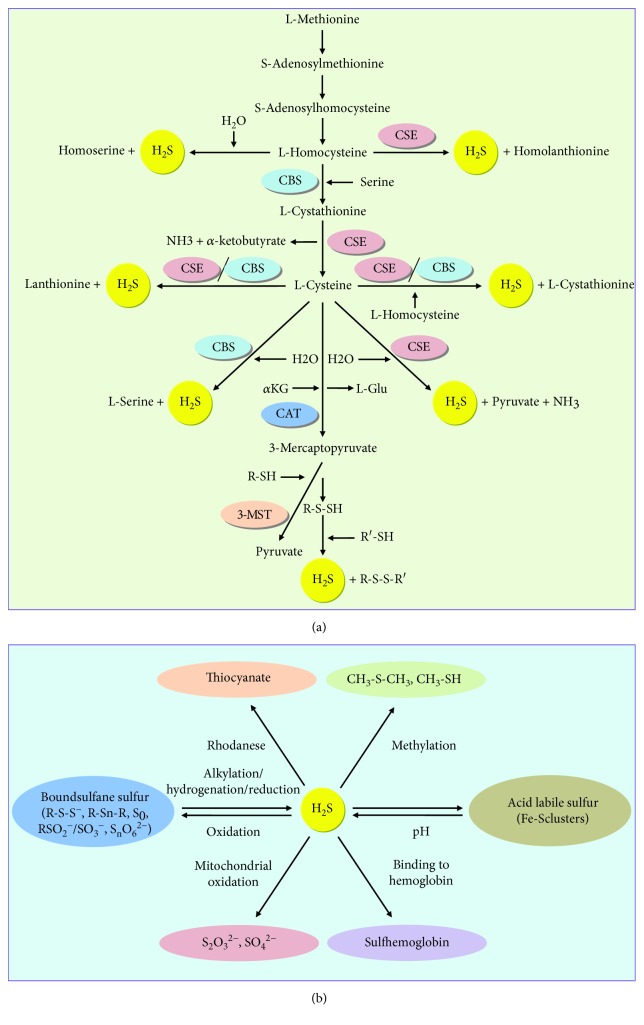Figure 1.
A schematic illustration of the biosynthesis and metabolism of H2S in the liver. (a) H2S is enzymatically produced from L-cysteine and L-homocysteine by CSE and CBS. 3-MST acts in combination with CAT to produce H2S from L-cysteine in the presence of αKG. (b) H2S can be stored as acid-labile sulfur and bound sulfane sulfur. Catabolism of H2S is thought to occur mainly via rhodanese, methylation, binding to hemoglobin, and mitochondrial oxidation. H2S: hydrogen sulfide; CSE: cystathionine γ-lyase; CBS: cystathionine β-synthase; H2O: water; NH3: ammonia; αKG: α-ketoglutarate; L-Glu: L-glutamate; CAT: cysteine aminotransferase; 3-MST: 3-mercaptopyruvate sulfurtransferase; pH: potential of hydrogen; CH3-S-CH3: dimethyl sulfide; CH3-SH: methanethiol; S2O32−: thiosulfate; SO42−: sulfate.

